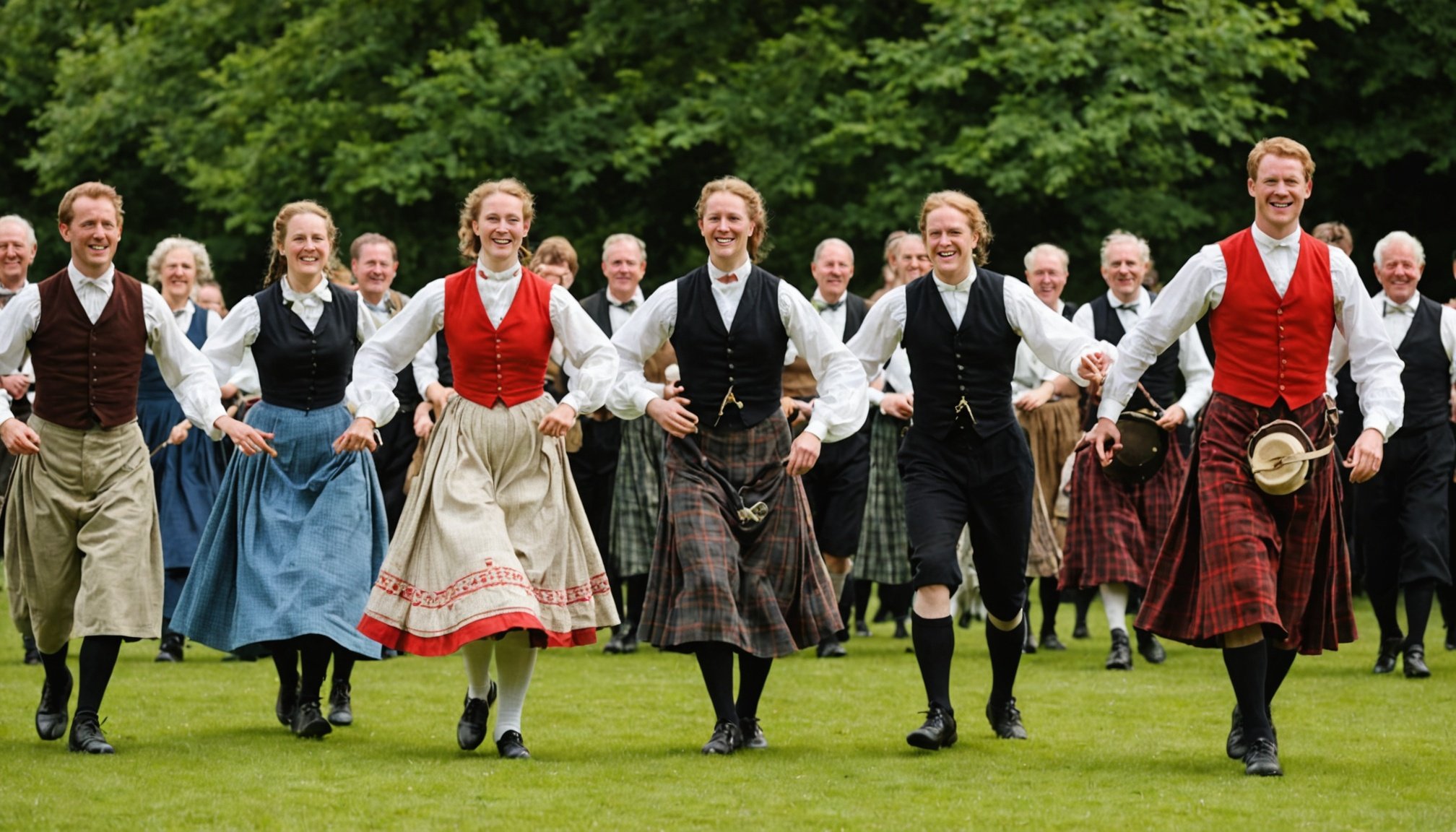Overview of British Folk Dance Traditions
British folk dance is a treasured element of the nation’s cultural heritage, showcasing vibrant traditions and expressive movements. The roots of British folk dance trace back centuries, evolving through various periods to reflect societal changes. Historically, these dances were often tied to agricultural rhythms and communal celebrations, serving as both entertainment and a form of storytelling.
Key characteristics that define British folk dance styles include lively steps, rhythmic patterns, and engaging formations. Morris dancing, with its bells and sticks, or the energetic jigs of the North, are just a couple of examples of the richly diverse styles that fall under the folk dance umbrella. Even though variations exist, many dances share a communal aspect and are accompanied by traditional tunes played on fiddle or accordion.
Also to discover : Discover Top UK Destinations for Guided Tours that Reveal the Intriguing History of British Folk Medicine
British folk dance plays a critical role in preserving cultural identity, acting as a living archive of local customs and beliefs. Each dance carries its own narrative, often passed down orally, highlighting the importance of oral tradition in maintaining cultural continuity. Through festivals and gatherings, folk dance continues to foster a sense of community, encouraging both young and old to engage with their cultural roots.
Top Locations to Experience British Folk Dance
To truly appreciate British folk dance, immersing yourself in folk dance events across the country is essential. These locations are renowned for bringing traditional dance to life.
Topic to read : Discovering the UK’s Textile Gems: Top Museums Unveiling the Rich Heritage of Fabric and Fashion
The Role of Regional Festivals
Major regional festivals are where folk dance event enthusiasts converge. Each festival offers a unique showcase of local dance traditions, highlighting traditional dance locations. For example, the Sidmouth Folk Festival in Devon gathers dancers and musicians from across the UK, presenting a kaleidoscope of styles in a vibrant atmosphere. Festivals such as these demonstrate how communities celebrate their dance heritage, involving local participants in planning and performing. This fosters a close-knit community spirit, allowing visitors to partake in a genuine cultural experience.
Iconic Dance Halls and Venues
Many historical venues remain hotspots for folk dance events. Dance halls like London’s Cecil Sharp House stage regular performances and ceilidhs, making them indispensable in today’s folk dance scene. These venues not only preserve British folk dance but also adapt to modern tastes with workshops and dance nights, bridging tradition and contemporary culture.
Famous Villages and Towns
Certain towns hold strong associations with folk dance, inviting visitors to explore these traditions. Locations like Whitby in North Yorkshire offer unique dance events, providing enriching experiences where guests can engage with the local cultural tapestry.
Preparing for a Folk Dance Experience
Participating in British folk dance offers a chance to engage with cultural heritage firsthand. To fully enjoy these folk dance events, a few preparation tips are essential.
When attending, dressing appropriately enhances the experience. Opt for comfortable clothing and shoes that allow for ease of movement, ensuring you can participate actively. Traditional accessories like handkerchiefs or bells might also be appreciated at certain events.
Understanding folk dance etiquette is crucial for newcomers. It’s important to embrace the community spirit that defines these gatherings. Typically, dances are collaborative, and a willingness to learn from seasoned participants is valued. Observing and following the lead of experienced dancers ensures a smooth integration.
Finding local classes or workshops is an excellent way to familiarize oneself with folk dance. These sessions provide foundational skills and help build confidence before stepping into larger events. Many towns and cities offer classes that cater to beginners, often advertised through community centres or cultural websites.
Whether you’re a seasoned dancer or a novice, the joy of participating in British folk dance lies in the connection with tradition and community. Embrace the shared experience and the richness of this cultural expression.
The Cultural Significance of Folk Dances
Understanding the cultural significance of British folk dance unveils its deep connections with history, music, and storytelling.
Folklore and Its Connection to Music
Music serves as the heartbeat of folk dance traditions. The synergy between music and dance is palpable, with each step synchronised to melodies played on traditional instruments like fiddles and accordions. Through this harmonious blend, stories of yore come to life—narratives are woven into the rhythm and lyrics, creating a multidimensional cultural expression that transcends time.
Dances as a Reflection of History
Many folk dances emerge as historical reflections, encapsulating significant events and social subjects within their choreography. For example, regional variations might portray local legends, revealing the intricate tapestry of Britain’s historical and social evolution. These dances not only entertain but also educate, fostering a deeper understanding of communal narratives through movement and tradition.
The Evolution and Modernization of Folk Dance
As society evolves, so do the forms of folk dance, seamlessly integrating contemporary influences while preserving traditional roots. Modern interpretations introduce dynamic elements, enriching the cultural landscape by merging existing practices with current movements. This continual evolution ensures the enduring presence of British folk dance in a global context, celebrating its past while embracing the future.





